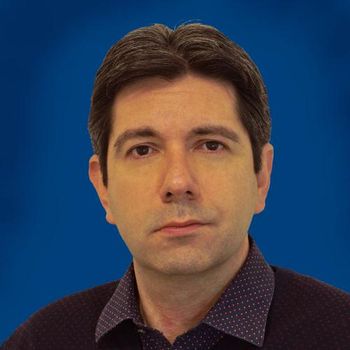
Best of the Week: Spectroscopy Mini Tutorials, Single Particle ICP-TOF-MS
Key Takeaways
- Spectroscopy techniques like NIR, Raman, and O-PTIR are revolutionizing molecular analysis, enabling precise, non-destructive measurements in diverse scientific fields.
- SP-ICP-TOF-MS offers a rapid, high-throughput approach for uranium isotope analysis, enhancing nuclear safeguards and forensic accuracy.
Top articles published this week include an interview with our Emerging Leader in Molecular Spectroscopy award winner Lingyan Shi, a mini-tutorial highlighting practical workflows and innovative applications, and an inside look at single-particle ICP-TOF-MS.
This week, Spectroscopy published a variety of articles highlighting recent studies in several application areas. Key techniques highlighted in these articles include near-infrared (NIR) spectroscopy, Raman spectroscopy, O-PTIR spectroscopy, TERS, new chemometric approaches, and single-particle inductively coupled plasma–time-of-flight mass spectroscopy (ICP-TOF-MS). In addition, a summary of a 10 article series on Unsolved Problems in Spectroscopy is presented. Happy reading!
The Spectroscopy Mini-Tutorials series offers concise, practice-focused guides for researchers and analytical chemists, combining spectroscopy with data analytics to enhance laboratory practice. Covering techniques such as NIR, Raman, O-PTIR, and TERS, the tutorials highlight practical workflows and innovative applications, ranging from honey authentication and biofluid analysis to machine learning (ML)-based detection of pesticides and microplastics (1). Other installments introduce complex-valued chemometrics for improved modeling and a new Rayleigh-based mixing rule for aerosol spectroscopy (1). Together, these tutorials showcase how the integration of spectroscopy, artificial intelligence, and advanced modeling is redefining molecular analysis, enabling faster, more precise, and non-destructive chemical and biological measurements across diverse scientific disciplines.
Researchers at Oak Ridge National Laboratory (ORNL) are using single-particle inductively coupled plasma time-of-flight mass spectrometry (SP-ICP-TOF-MS) as a faster, high-throughput method for uranium isotope ratio analysis to support International Atomic Energy Agency (IAEA) nuclear safeguards (2). Unlike traditional bulk digestion and particle-level mass spectrometry methods, SP-ICP-TOF-MS rapidly measures thousands of uranium particles simultaneously, distinguishing natural, depleted, and enriched samples with high precision (2). The team, led by Benjamin Manard with postdoctoral researchers Sarah Szakas and Jordan Stanberry, emphasized the technique’s potential for rapid screening, improved forensic accuracy, and the development of certified reference materials to strengthen global nuclear security efforts.
At the 2025 SciX Conference, Dr. Lingyan Shi of the University of California, San Diego, received Spectroscopy magazine’s Emerging Leader in Molecular Spectroscopy Award and chaired a technical session featuring leading researchers in molecular imaging. Talks covered breakthroughs in label-free super-multiplex optical imaging (Wei Min), infrared spectroscopic imaging for cancer diagnostics (Rohit Bhargava), advanced Raman microscopy for real-time metabolic tracking (Katsumasa Fujita), artifact correction in photo-induced force microscopy (Eric Potma), and enhanced CARS microscopy using femtosecond pulses (Ji-Xin Cheng) (3). Shi reflected on the session’s focus on innovation in label-free imaging and its transformative potential for biomedical research (3).
This study presents a new inductively coupled plasma optical emission spectrometry (ICP-OES) method for accurately determining 17 trace impurity elements in aluminum nitride (AlN), a critical material for advanced semiconductor and defense technologies. Because of the lack of analytical standards for AlN, the researchers developed a sulfuric acid microwave digestion approach to completely dissolve samples efficiently (4). Factors such as sample weight, analytical wavelengths, and matrix effects were optimized, with matrix matching used to correct spectral interferences. The method achieved excellent linearity, precision (RSD 0.91–8.96%), and recovery (92.9–108%), offering a rapid, accurate, and practical solution for routine AlN impurity analysis (4).
The tutorial article highlights ten tutorial topics addressing major challenges and innovations in spectroscopy and chemometrics, emphasizing their cross-disciplinary relevance. Near-infrared (NIR) spectroscopy features prominently for studies on diffuse reflectance, scatter correction, and sample heterogeneity (5). Mid-infrared (MIR/IR) and Raman spectroscopy are key for nonlinear calibration, data fusion, and analyte signal analysis due to their molecular specificity. UV-vis spectroscopy supports calibration transfer, whereas XRF and ICP techniques aid in integrating atomic and vibrational data (5). Hyperspectral imaging and fluorescence or LIBS techniques advance spatial and nonlinear modeling (5). Overall, all major spectroscopies benefit from multivariate approaches, with NIR and MIR/IR being the most broadly applied.
References
- Workman, Jr., J. Spectroscopy Mini-Tutorials: NIR, Raman, O-PTIR, and Chemometrics for Food, Environmental, and Biomedical Analysis. Spectroscopy. Available at:
https://www.spectroscopyonline.com/view/spectroscopy-mini-tutorials-nir-raman-o-ptir-and-chemometrics-for-food-environmental-and-biomedical-analysis (accessed 2025-10-22). - Chasse, J. High-Throughput Isotopic Analysis of Uranium Particles for Nuclear Safeguards Using Single-Particle ICP-TOF-MS. Spectroscopy. Available at:
https://www.spectroscopyonline.com/view/high-throughput-isotopic-analysis-of-uranium-particles-for-nuclear-safeguards-using-single-particle-icp-tof-ms (accessed 2025-10-22). - Wetzel, W. In Case You Missed It: Recapping the Emerging Leader in Molecular Spectroscopy Award Session. Spectroscopy. Available at:
https://www.spectroscopyonline.com/view/in-case-you-missed-it-recapping-the-emerging-leader-in-molecular-spectroscopy-award-session (accessed 2025-10-22). - Xuan, H.; Zihui, C.; Lijiu, Z. Determination of 17 Impurity Elements in Aluminum Nitride by Inductively Coupled Plasma Optical Emission Spectrometry with Microwave Digestion. Spectroscopy. Available at:
https://www.spectroscopyonline.com/view/determination-of-17-impurity-elements-in-aluminum-nitride-by-inductively-coupled-plasma-optical-emission-spectrometry-with-microwave-digestion (accessed 2025-10-22). - Workman, Jr., J. The Frontier of Spectroscopy: 10 Unsolved Questions. Spectroscopy. Available at:
https://www.spectroscopyonline.com/view/the-frontier-of-spectroscopy-10-unsolved-questions (accessed 2025-10-22).
Newsletter
Get essential updates on the latest spectroscopy technologies, regulatory standards, and best practices—subscribe today to Spectroscopy.





